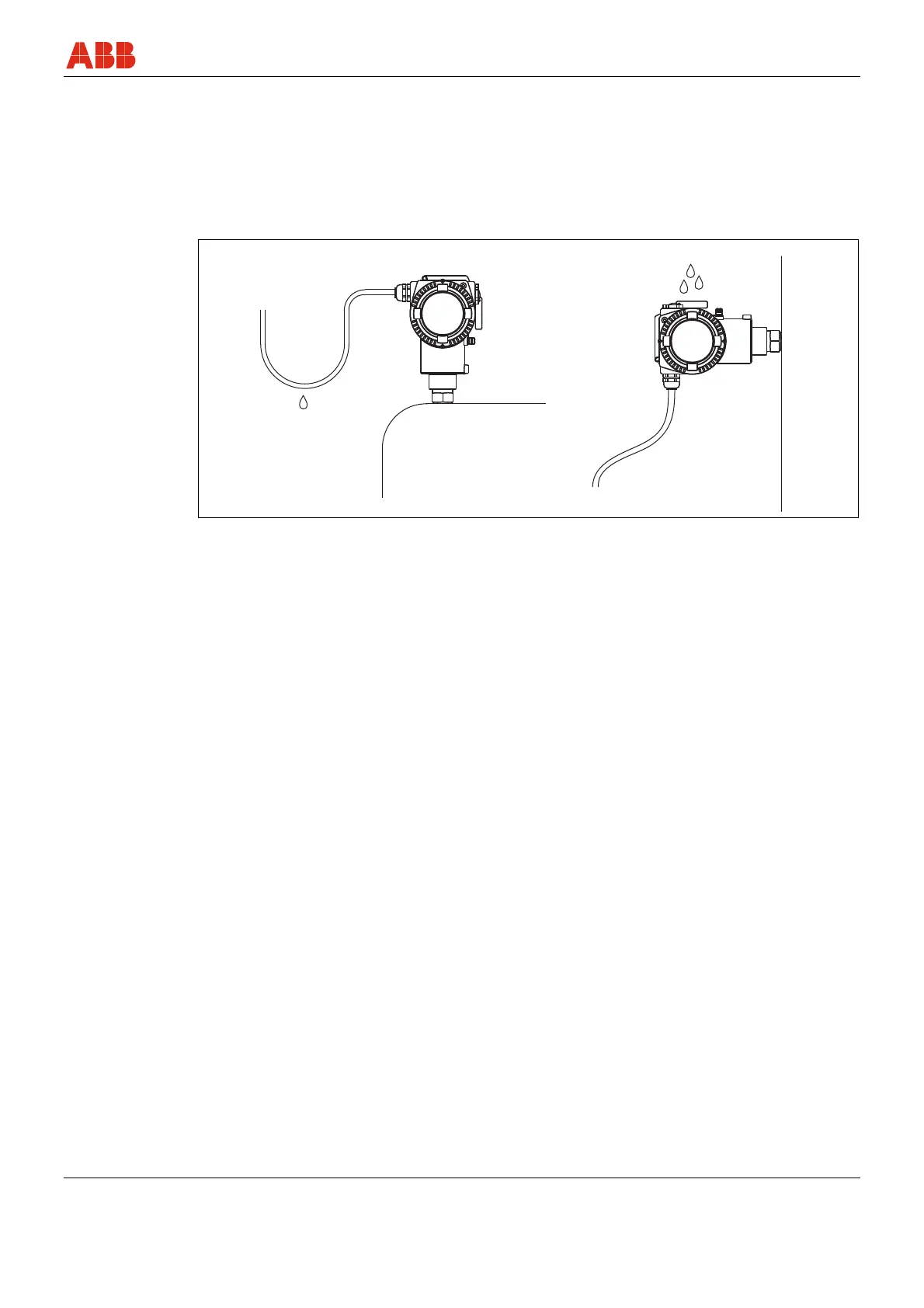Mounting
IM/265Gx/Ax-EN-07 265Gx, 265Ax 27
4.5 Moisture
Use suitable cables and tighten cable glands securely. The transmitter can also be protected
against the ingress of moisture by routing the connecting cable downward before securing it.
This allows rain and condensation to drip down. This is especially important for installation in
outdoor areas and rooms that are exposed to moisture (e.g., due to cleaning processes) or on
cooled or heated tanks.
M00125
Fig. 6: Steps for preventing the ingress of moisture
4.6 Impulse line
In order for the pipes to be laid correctly, the following points must be observed:
• Keep the impulse line as short as possible and avoid sharp bends.
• Lay the impulse line in such a way that no deposits can accumulate in it. Gradients should
not be less than approx. 8 % (ascending or descending).
• The impulse line should be blown through with compressed air or, better yet, flushed through
with the measuring medium before connection.
• Completely vent the impulse line if the medium is a fluid.
• Lay the impulse line in such a way that gas bubbles (when measuring fluids) or condensate
(when measuring gases) can flow back into the process line.
• When measuring steam, lay the impulse line in such a way that hot steam cannot flow back
into the process connection (water trap, e.g., a water trap pipe that is filled with water before
installation).
• Check the tightness of the connection.

